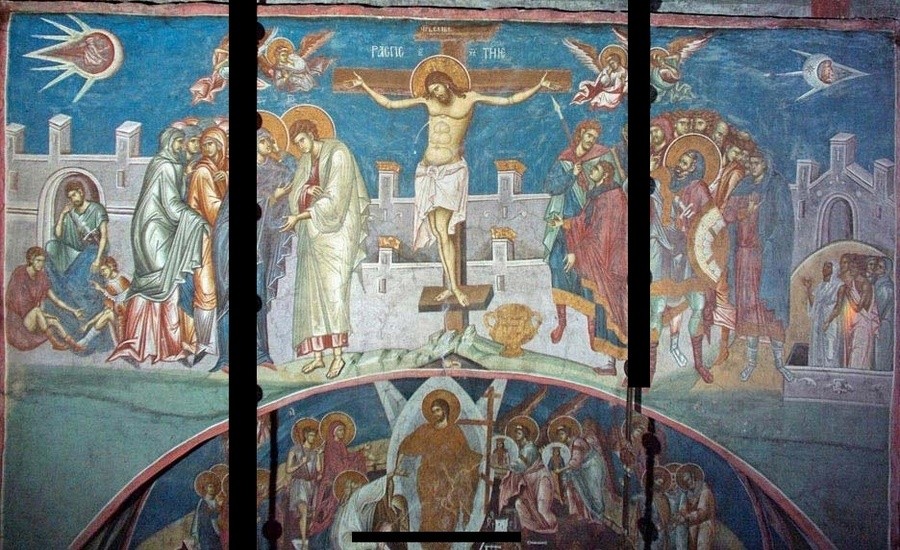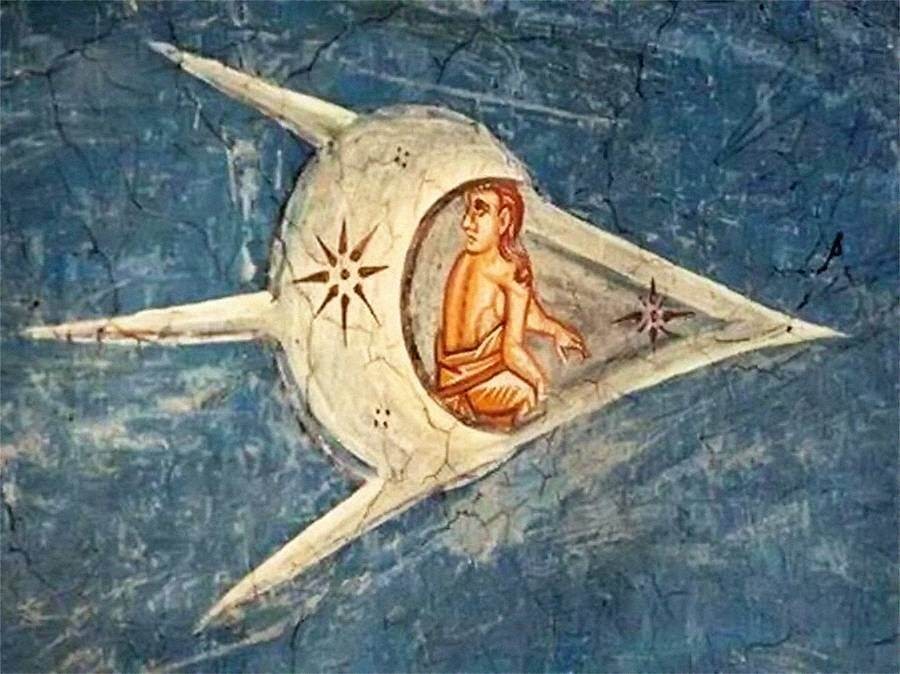The Kosovo Fresco: A 14th-Century Cross Flanked by Flying Machines
Inside the Church of the Savior at Visoki Dečani Monastery in Kosovo and Metohija, a 14th-century fresco centers on the crucified Jesus. On either side of the cross, two figures resemble flying machines. The figure on the right appears to be a pilot, his hand on a wheel as he glances back at a pursuer. The second airman, with one hand, signals that he will still be caught, and with the other finger presses something on a panel like an instrument board.

In This Article:
A 1964 Discovery That Shocked the World
A Yugoslav art student, Aleksandar Paunović, first drew attention to these details in 1964. At that moment, public fascination with space was at its peak, turning the finding into a sensation of global scale.

Medieval Imagery: Sun and Moon as People
In truth, these images are a hallmark of medieval iconography. In this tradition, the Sun and Moon are often depicted with human faces or figures. The Sun represents God, while the Moon stands for the Church, which shines with solar rays.

From UFO Theories to Sacred Symbolism
Although some readers describe the figures as aircraft or extraterrestrials, most art historians see them as symbolic celestial beings within a familiar medieval visual language. The fresco demonstrates how medieval artists fused celestial imagery with religious meaning, not evidence of ancient technology.

A Window into Faith and Cosmic Wonder
This fresco shows how sacred art uses celestial imagery to convey ideas about power, creation, and salvation. The Church of the Savior at Visoki Dečani Monastery stands as a gateway to Kosovo and Metohija's cultural history, inviting us to reflect on how people in the 14th century imagined the heavens and how that imagination still resonates today.

